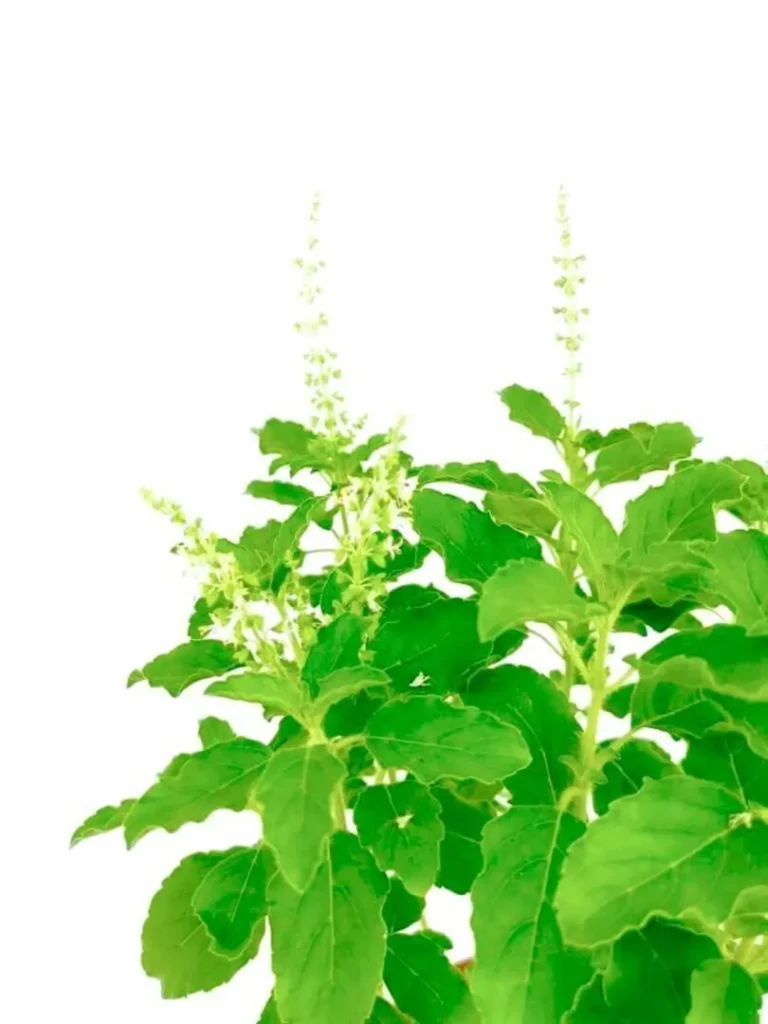Holy Basil (Tulsi) Care
Whether you’re growing herbs indoors or in a backyard garden, this guide contains all the tips and tricks you’ll need to grow your herbs!

How to care for your Holy Basil
- LIGHT
Your Basil will grow best in full sun, but will also do just fine indoors on a sunny windowsill or grow light. However, make sure it is receiving at least 6-8 hours of direct sun per day.
- WATER
Do not allow the soil of your Basil to dry out completely. Water when the top 25% of soil is dry. During peak growth in the spring and summer, watering may be needed every day.
- HUMIDITY
- TEMPERATURE
Basil will do best in temperatures between 60-90 degrees. Basil is sensitive to the cold, so make sure the temperature does not dip below 55 degrees.
- FOOD
- TOXICITY
Basil is non-toxic. However, it is meant to be eaten by humans and not pets.
- ADDITIONAL CARE
Cut your Basil at any point to enjoy it. Simply cut off the top of the plant, and it will regrow new leaves from that point. Do not worry about harming the plant, as cutting it actually encourages new growth.
Common Issues for your Holy Basil
To solve this, we recommend regular trimming of your plant. If you are using your herbs regularly, this shouldn’t be a problem. If you aren’t using your herbs that often, we recommend trimming the top of your plant about once a week to keep it bushy and prevent flowering.
Pruning and trimming not only prevents flowering, but it makes your plant bushier and encourages lots of new growth. A good rule of thumb when pruning is to not remove more than ⅓ of the plant at one time. When pruning, make sure to use clean, sharp scissors or garden shears. You can clean your shears using rubbing alcohol, and we suggest cleaning your shears in between trimming each plant.
If the plant has already started flowering, no problem. Simply cut off all of the flowers and it will start regrowing new leaves.
Did you forget to water your plant for a few days? Are you keeping your plant outside where it’s very hot and sunny? If so, your plant is probably just thirsty! When the weather is especially hot and sunny during the summer months, herbs will need more water than usual. Usually, herbs can bounce right back, even if they look limp and sad. We recommend a soak-watering to help fully rehydrate your plant.
Here’s how to soak-water your Herb Plant:
Place your plant in your sink or tub without the saucer. Fill your basin up with about 3-4″ of water. Make sure the water isn’t excessively hot or cold.
Allow your plant to soak up water through the drainage hole in the bottom of the pot for at least 45 min. Spraying the top of the plant with a hose or sink attachment will help rehydrate the plant and speed up the process. When your plant’s soil is evenly damp, drain the sink/tub and allow the plant to rest while it drains thoroughly. Place the plant back on its saucer and back in its proper spot.
Alternatively, if you are keeping your herbs outdoors and have a garden hose, you can also soak your plant with the hose – water it generously until water comes out of the drainage hole. Repeat until the soil looks fully rehydrated.
Going forward, it will help to check on your plant daily to see how it is doing and if it needs water. We suggest watering when the top 1-2 inches of soil are dry. Although drying out occasionally shouldn’t hurt your plant longterm, if you let it go dry too often it might show signs of damage like brown, dry leaves. For best results, keep your herbs consistently moist.
